The low-tire pressure light — that pesky orange light on your dashboard always seems to come on at the worst times — when you are running late for work, stuck in traffic, or on a deserted road.
I should know. About 2 months ago, I suffered a low tire-pressure induced blowout in the middle of the Howard Frankland Bridge in bumper to bumper traffic.
And it was pouring rain.
And blowing wind.
Oh, and there was some lightning too.
It was not ideal.
When you see the low-tire pressure light pop up you might feel concerned but usually not concerned enough to stop as soon as you can for air. Hell, you might choose to ignore that light for a few days or even weeks (er, possibly even longer if you are a true procrastinator)! I mean, you don’t have a flat tire (yet, you hope!) so it’s not a big deal driving with your low-tire pressure light is on, right?
Wrong! It might seem like a royal pain to stop and take care of your low-tire pressure but really — do the right thing and just get ‘er done.
The longer you leave your low tire pressure, the more you set yourself up for a litany of problems including lower gas mileage all the way to a potentially catastrophic blowout!
Why is it important to check tire pressure?Checking your tire pressure and keeping your tires properly inflated is a chore, but it is much easier than dealing with the consequences of under-inflated tires. Low tire pressure can negatively affect handling, tire wear, fuel economy, and most importantly, safety.
Low tire pressure can also cause a car to be less responsive and have less traction, making it more difficult to avoid emergency situations (think switching lanes last minute in traffic or dodging a pothole). Less traction also means that your car’s engine will have to work harder and use more gas than it needs to. According to the EPA, properly inflated tires can increase fuel efficiency by three percent or more. That is money in your pocket!
Your fuel economy suffers when you under inflate your tires.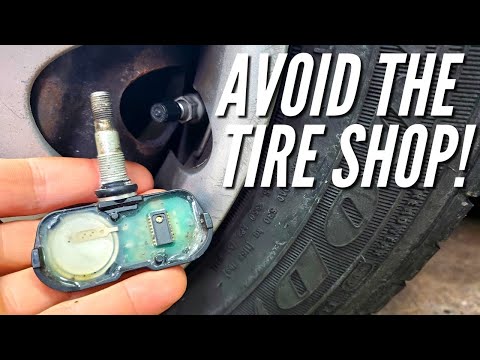 Under inflated tires can lower your gas mileage by about 0.2% for every 1 PSI drop in average pressure.
Under inflated tires can lower your gas mileage by about 0.2% for every 1 PSI drop in average pressure.
While that might not seem like a lot at first, let’s assume your tires are under inflated by about 12 psi, which is very common. Assuming you drive the nationwide average of 13,476 miles a year, your under inflated tires are wasting roughly a full tank of gas each year.
But that isn’t all.
Under-inflation causes tires to distort, leading to increased wear, especially on the sidewalls of the tires, putting your tires at an increased risk of having a blow out — something no one wants to experience.
Tire blowouts kill about 500 drivers a year, and cause well over 2,000 accidents in the United States alone.
Even worse, most tire blowouts are caused by negligent inflation of your tires. Tire pressure management systems have been mandatory since 2007, so if you’re driving a newer car, your car will tell you when it’s time to inflate.
However, if you’re driving an older car, it’s extremely important to check your tire pressure at least once a month.
It is important to know that tire pressure can be lost without a tire appearing under inflated or flat. So just because a tire looks ok, doesn’t always mean it is.
What is the lowest tire pressure you can have and still drive?We’ve already established why it doesn’t make sense to drive with low-tire pressure. However, if you’re wondering how “low you can go” and still drive your care, listen up.
If you have standard passenger tires (ninety percent of vehicles do) the lowest tire pressure you can generally drive with is 20 pounds per square inch (PSI). Anything under 20 PSI is considered a flat tire, and puts you at risk for a potentially devastating blowout.
How low does tire pressure have to be for the low tire pressure light to come on?In 2008, a federal law was put into place requiring automakers to provide tire-pressure monitoring systems (TPMS) as standard vehicle equipment. The low tire-pressure warning light will display when the tire’s air pressure is 25 percent below the automaker’s recommended PSI.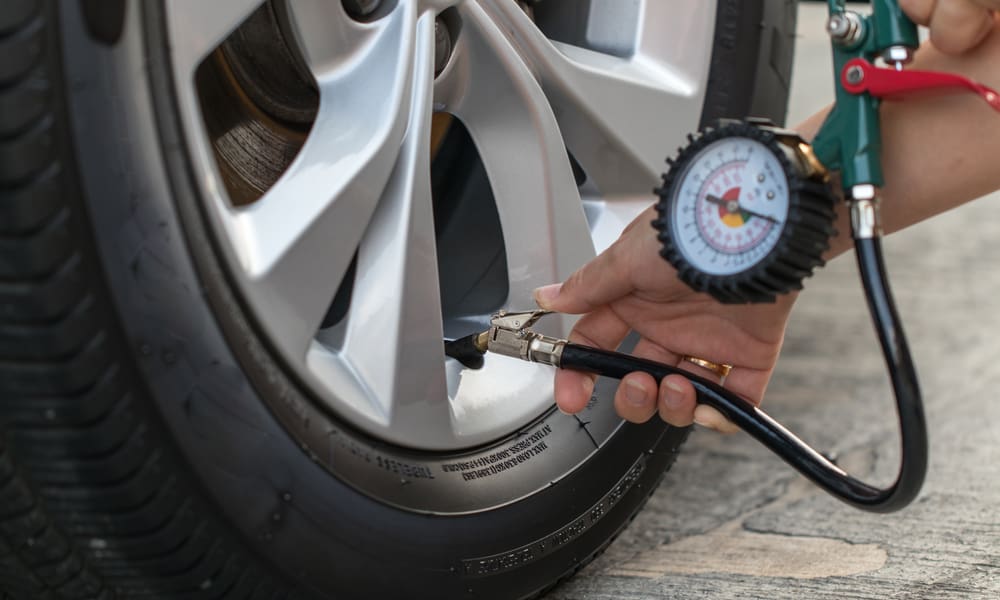 A 25 percent reduction in tire pressure is considered severe. So take the low-tire pressure warning as the warning it is!
A 25 percent reduction in tire pressure is considered severe. So take the low-tire pressure warning as the warning it is!
Why are your tires low on air? Obviously, tire damage will cause tire pressure to become low but it is not the only reason for tire pressure to drop. Tires can lose pressure over time and can be affected by cold temperatures.
According to Car and Driver, tires normally lose about a pound of pressure for every 10-degree drop in temperature. It is important to check tire pressure as the seasons change to account for changes in temperature and the resultant decrease in tire pressure.
You also have to account for your tires progressively losing air. On average, your tire looses about 1 PSI per month. With most passenger tires being inflated to around 35 PSI, it doesn’t take that long for you to get into hot water.
Which makes it extra important to know when your tire pressure is low, which requires you to know the recommended pressure in the first place.
As a driver, you should be familiar with auto manufacturer’s tire pressure recommendations. You can find this information in your vehicle’s owner’s manual. It can also be found on the drivers-side door jamb.
How do tire-pressure monitoring systems work?Have you ever wondered how the whole low-tire pressure alert works? It’s pretty simple but interesting at the same time.
Tire-pressure monitoring systems use a sensor which is located in the pressurized pocket between the wheel and the tire. The sensor constantly measures the air pressure within the tire and transmits that information to the vehicle’s onboard computer. If tire pressure is low, the driver will be alerted by a low tire-pressure warning in the instrument display. Just want you (don’t!) want to see!
Can low tire pressure be caused by cold weather?Yes! Those miserably cold days can definitely cause tire pressure to decrease! Tires generally lose about a pound of pressure for every 10-degree drop in temperature. You should check tire pressure when the temperatures dip down, especially if you live in a colder climate.
You should check tire pressure when the temperatures dip down, especially if you live in a colder climate.
Just another reason that I love living in Florida.
How do you check tire pressure?So the decision has been made to buck up and check your car’s tire pressure. Nice job.
It is a good idea to have a tire-pressure gauge in your vehicle. Although some gas station air pumps have gauges, they’re not always accurate or easy to reach. It’s much better to have your own tire gauge so that you can keep an eye on tire pressure at home or on the road. You can easily buy an inexpensive, hand-held tire pressure gauge at any auto parts store or major department stores, like Target or Walmart.
Although these have been around for what feels like forever, newer digital gauges can be much more accurate. If you have it in your budget, spend the extra $5 and get a digital.
The best time to check tire pressure is first thing in the morning when the tires are “cold” or at least three hours after driving.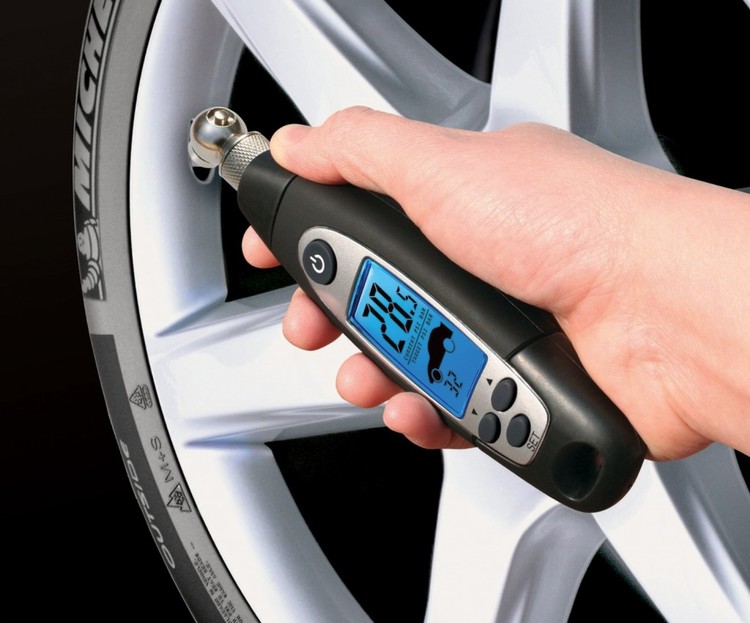 Take off the valve cap and press the tire-pressure gauge firmly into the valve stem until the device produces a pounds-per-square-inch (PSI) reading. If you hear a hissing sound you’re releasing air from the tire and will need to push the gauge more firmly in the valve stem to get a reading.
Take off the valve cap and press the tire-pressure gauge firmly into the valve stem until the device produces a pounds-per-square-inch (PSI) reading. If you hear a hissing sound you’re releasing air from the tire and will need to push the gauge more firmly in the valve stem to get a reading.
Pressure readings are more likely to be higher (usually between 2 and 6 PSI higher) if the car has been recently driven and the tires are hot. If you do end up checking your tire pressure after driving, you should add a little extra air pressure to account for the artificially high tire pressure reading
How can I fix tire pressure?If you find your tire pressure is low you will need to add air to the tire. Many gas stations have air pumps that you can use to top off your tires. Some machines take coins only but most will also accept a credit card for payment. It usually costs a dollar or two to use an air pump — this should give you more than enough time to add whatever air you need to your tires.
To fix tire pressure:
Tire pressure should be checked monthly. Yes, it is another item on your to-do list but the few minutes it takes to check your pressure will extend the life of your tires, increase your gas mileage, improve your vehicle’s performance, and protect your safety and the safety of other drivers!
Yes, it is another item on your to-do list but the few minutes it takes to check your pressure will extend the life of your tires, increase your gas mileage, improve your vehicle’s performance, and protect your safety and the safety of other drivers!
It’s worth doing.
You know what else is worth doing?
Getting 24/7 roadside assistance in case you ever suffer a blowout on the side of the road so you’ll never have to worry about being stranded. One call is all it takes.
You can get a tow, or a new tire and be back on the road as good as new with no hassle on your part.
This is one of the many perks you’ll get with an extended warranty policy from Protect My Car that can potentially save you thousands on expensive repairs like engine or transmission failure.
Most of our plans start at less than $2 a day. To see how affordable it can be to protect your car and get 24/7 roadside assistance to protect your car from breakdowns, visit pmcquote.com to get a free, instant quote with no phone call needed.
By Shawn Furman
Last Updated August 30, 2021
Most modern passenger cars come with manufacturers recommended tire pressure of about 35 pounds per square inch or PSI.
Some vehicles require slightly lower or slightly higher pressures. Regardless of what your vehicle requires, most manufacturers fit a sticker on the driver-side doorjamb showing the appropriate PSI for your vehicle. If there is no sticker, your owner’s manual should have inflation amounts listed.
The recommended inflation amount is always based on a cold tire temperature. It is recommended that tires always are kept inflated to the closest value set by the vehicle manufacturer, but most vehicles equipped with a tire pressure monitoring system will alert the driver to values about ten percent less than the specified PSI.
Technically, any PSI below the recommended amount is too low, but a deviation of more than ten percent is considered by most to be too low – for a vehicle requiring tire inflation to 35 PSI, a pressure which reads about 31 or 32 PSI is considered underinflated. Some manufacturers can allow up to twenty-five percent air loss before the TPMS light is illuminated. A tire that shows 20 PSI or lower is usually considered to be flat.
Some manufacturers can allow up to twenty-five percent air loss before the TPMS light is illuminated. A tire that shows 20 PSI or lower is usually considered to be flat.
Besides a nail or other object putting a hole in the tire itself, the two most common issues that affect tire pressure are a slow leak and air temperature.
A slow leak is similar to a hole or a tire puncture, but rather than having a puncture which leads to a completely flat tire in a short amount of time, a slow leak is usually much more drawn out.
It can be the result of an improper seal between the wheel and tire upon application of new tires, damaged wheels, cracking tires, damaged air valve, or a previous puncture that has been repaired poorly or that has come undone. Unlike a common tire puncture, the chances of having to replace the tire because of the amount of damage are much more unlikely.
The more common factor that affects tire pressure is the air temperature. As air warms, it expands. As it cools, it contracts. This is why so many people start their vehicles on a cold morning and find the TPMS system showing low air pressure, even if it has not come on in weeks or months.
As air warms, it expands. As it cools, it contracts. This is why so many people start their vehicles on a cold morning and find the TPMS system showing low air pressure, even if it has not come on in weeks or months.
This is also why manufacturers and mechanics recommend inflating your tires when they are cool – that is when the vehicle has not been in use recently and has been sitting, not necessarily when the tires are cooled to a certain temperature.
The low tire pressure warning light in the instrument cluster is the most obvious way to know when one or more of your tires is too low. TPMS systems were mandated on all vehicles sold starting in 2008, so it is becoming harder to find one without this equipped.
Not all pre-2008 vehicles had this though, and there are still plenty of vehicles on the road that may not be equipped with TPMS. You will know if your vehicle has a tire pressure system by the flat tire icon that lights up when you turn on the ignition.
If you are still unsure, your owner’s manual will have further information. Regardless of whether or not your vehicle has a TPMS system or not, it is good practice to check your tire pressure twice a month as even a small amount of air loss can have long-term impacts if not rectified.
Tires are designed to provide the best possible fuel economy when properly inflated by combining grip with the surface area. Similarly to kicking an inflated ball versus kicking one that is not inflated, tires can bog down a vehicle, causing the engine to work harder to make it move.
A small amount of deflation may not be recognizable when you are driving, but when a vehicle is traveling at high speeds, it can make a large difference.
Some sources even estimate that a loss of up to three miles per gallon could be caused by the under-inflation of tires. This will most likely happen if there is more than one tire that is underinflated at a time.
Premature tire wear is another sign that your tire pressure is too low. Rather than having a uniform tread across the tire, an underinflated tire will wear down on each side with the tread remaining thicker in the middle.
Rather than having a uniform tread across the tire, an underinflated tire will wear down on each side with the tread remaining thicker in the middle.
The opposite will occur with an over-inflated tire where the middle of the tire will show premature balding. This is not always an obvious sign of inadequate tire pressure, especially if the tires were just installed. Even though this process might take over a year, it usually becomes obvious which tires have suffered the most from under inflation.
Another sign that your tire pressure might be too low is an increase in stopping distance from what is normal. A keen driver will notice this more than the average commuter as this is also not always the most obvious sign of under inflation, but studies show that stopping distances can be severely inhibited by under-inflated tires. In cases like these, it will become more obvious. The problem becomes even worse during rainy and snowy conditions.
Steering and driving feel are the most obvious ways to tell if your tire pressure is too low, especially if you have had your vehicle for a while and know what it is like to drive.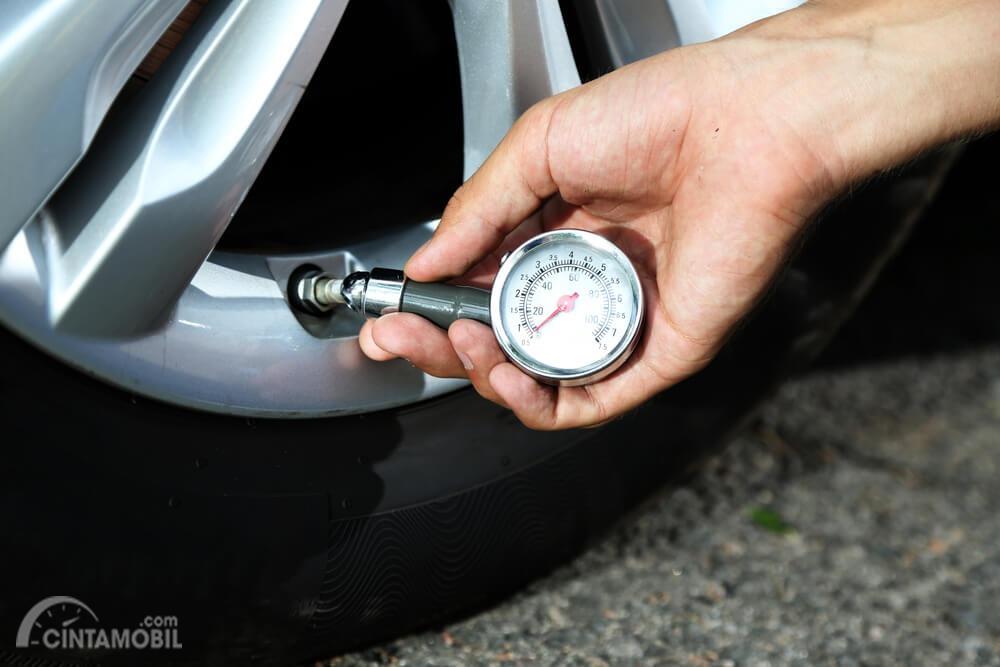
Vehicles were built to handle a specific way under ideal conditions, and low tire pressure affects these conditions negatively. Sloppy handling, pulling to one side, difficulty keeping the vehicle driving in a straight line, not being able to steer precisely, and a generally unsettled ride can all point to low tire pressure.
All of this becomes compounded in adverse weather conditions, and in some severe instances, it can cause the vehicle to lose all traction.
Driving with low tire pressure is a fairly common problem, but it is also one of the most dangerous. Two very serious consequences can occur as a result.
It has already been mentioned that a vehicle’s handling and steering becomes less effective when low tire pressure comes into play and that poor weather conditions can expose these issues even more.
Sudden loss of control can happen at any time when a vehicle’s tires are under-inflated, and when driving at speed, any loss of traction can cause an accident, even if no signs of irregular handling had been present before.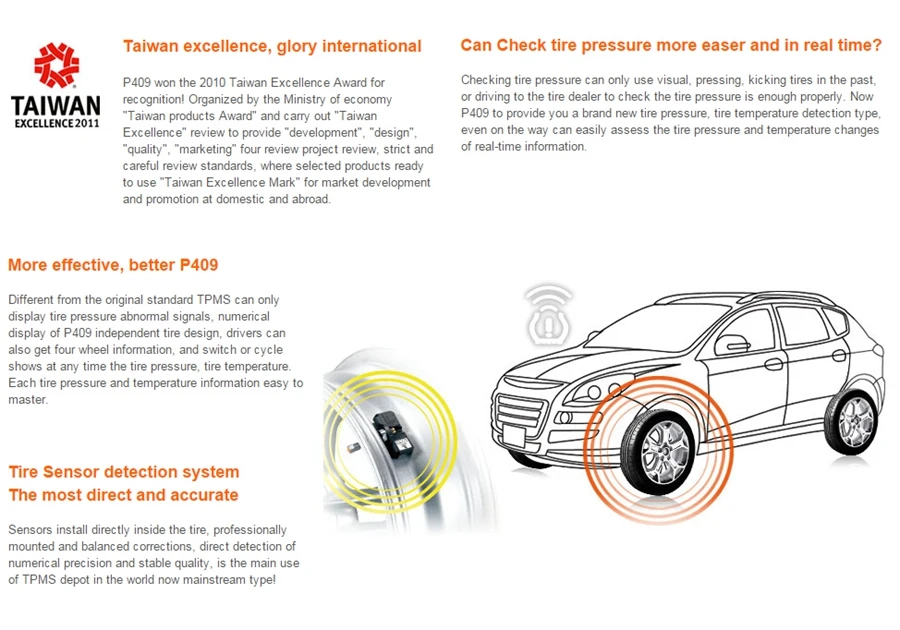 This consequence of low tire pressure accounts for several thousand accidents per year.
This consequence of low tire pressure accounts for several thousand accidents per year.
Tire blowouts are the most dangerous consequence of low tire pressure, and they are caused by a weakened tire structure or an excessive amount of wear. Low tire pressure, coupled with the weight of the vehicle and heavy tire loads can cause one or more parts of the tire to suddenly fail. Most blowouts usually happen without warning, the main reason they can be deadly.
If a blowout occurs on your vehicle, it is important to stay calm. Usually, you will hear a loud bang, quickly followed by a sudden jerk to one side or the other.
To avoid an accident, grab the steering wheel tightly, briefly press the accelerator to resettle and realign the vehicle, then let it gradually slow down by itself as you pull to the side of the road. Once the vehicle slows to about 20-30 miles per hour, you may slowly press the brake to fully bring the vehicle to a stop.
Tire pressure becomes too low when it drops below the manufacturers recommended inflated value, often found on a sticker on the driver’s side doorjamb of a vehicle.
The pressure is measured in pounds per square inch, and tire pressure monitoring systems usually alert the driver to pressures that drop about ten to twenty-five percent below recommended value – usually around 35 PSI.
Checking tire pressure about two times per month can ensure that premature tire wear, increased braking distances, inadequate steering, and accidents are avoided because of low tire pressures.
Even if the low pressure light is on, many people don't pay attention to checking their tires. They continue driving with low tire pressure, which is a dangerous practice. The longer someone drives with low tire pressure, the more risk they face on the road.
You might think that keeping all your tires inflated is a daunting task, but it's easier than dealing with the consequences of the lowest tire pressure.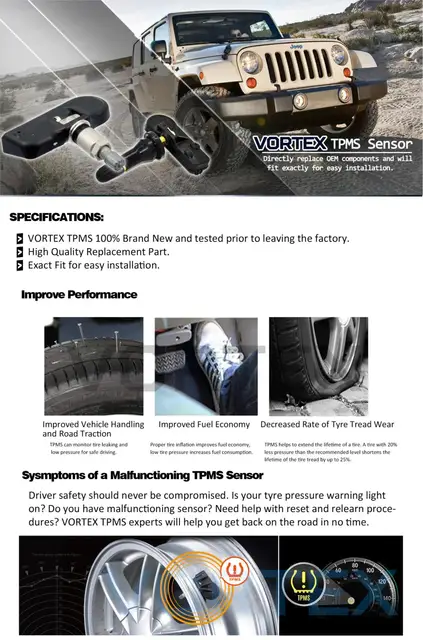 Driving with low tire pressure will adversely affect fuel economy, handling, tire wear and, most importantly, safety.
Driving with low tire pressure will adversely affect fuel economy, handling, tire wear and, most importantly, safety.
It also makes the vehicle less responsive and reduces traction. Thus, it will be more difficult for users to avoid emergency situations, such as a quick lane change. In addition to high fuel consumption, less traction means more pressure on the engine. Under-inflated tires also reduce mileage by about 0.2% for every 1 psi drop in average tire pressure.
Due to low pressure, there is increased wear on the sidewalls of the tire. It subsequently causes explosions, killing the drivers.
Be aware that even if a tire does not look flat, it may lose pressure. So measuring air pressure is the surest way to find out. In the case of older vehicles, users should check the pressure at least once a month.
Whenever tire-related car accidents occur, studies show that only 58% of drivers can correctly understand the TPMS life-saving symbol. The number is very alarming, as sticking behind the wheel with low tire pressure can save lives.
The number is very alarming, as sticking behind the wheel with low tire pressure can save lives.
When one continues to drive with low tire pressure, the risk of tire failure increases. Driving at 60 mph in these conditions can cause tires to explode and the driver can lose control of the vehicle, endangering the lives of everyone in the vehicle. At the same time, it also causes faster tire wear and higher fuel consumption.
It should be clear to you that driving with low tire pressure is unsafe. However, some people may need to drive in this condition and need to know which tire pressure is too low to drive.
This indicator indicates that the air pressure in any of the car tires is below the recommended volume. Therefore, you must take this light seriously and must not ignore it under any circumstances. As soon as any indication appears, check the air pressure in all tires. Even if the car is new, you should not skip this step. If you find a bad tire, adjust the pressure.
As soon as any indication appears, check the air pressure in all tires. Even if the car is new, you should not skip this step. If you find a bad tire, adjust the pressure.
Colder weather often causes tire pressure to drop, so check all tire pressures. If the pressure drops even after filling with air, there may be a hole in the tire. Go to any repair shop to fix the tire, or as a last resort, users may need to replace it.
In addition to reducing fuel efficiency, low tire pressure also threatens road safety. If the pressure drops below the recommended value, the tires may chemically break at high speeds due to overheating. As a result, there may be accidents. Although people should not drive with low tire pressure, take the following precautions if they have no other choice.

Conclusion
Experts do not recommend driving with low tire pressure. Therefore, drivers should be aware of what is considered low tire pressure and try to take the car to the nearest shop as soon as they find out about it.
Responsible
Sergey Fedorov
expert
Everyone knows the theory. Tire pressure affects comfort, handling, braking distance and other vehicle parameters. Therefore, you should periodically, at least once a month, control the pressure in the tires. But tell me, how many of us regularly do this? But you need to download exactly as much as recommended for your model in the instruction manual. For our convenience, tips in the form of a table with recommended figures were hung on the middle pillar of the body and on the inside of the fuel tank hatch. But many never bother to look at it. But in vain!
Tire pressure affects comfort, handling, braking distance and other vehicle parameters. Therefore, you should periodically, at least once a month, control the pressure in the tires. But tell me, how many of us regularly do this? But you need to download exactly as much as recommended for your model in the instruction manual. For our convenience, tips in the form of a table with recommended figures were hung on the middle pillar of the body and on the inside of the fuel tank hatch. But many never bother to look at it. But in vain!
If the tire pressure is significantly lower than normal, the contact patch increases. Moreover, the tread shrinks, as it were, shrinking in the middle, and during operation it begins to wear out intensively along the edges. Not only is premature tire wear happening; the lack of compressed air in it leads to an increase in deformation and more heating of the tire . At the same time, fuel consumption noticeably increases , and if you get into the pit, you can completely pierce the wheel, damaging the metal frame of the tire. But that's not all. A car with flat tires reacts more slowly to steering and is much worse controlled by , which, in the end, can lead to an emergency or even an accident.
But that's not all. A car with flat tires reacts more slowly to steering and is much worse controlled by , which, in the end, can lead to an emergency or even an accident.
Higher tire pressure helps save fuel, which is why some particularly frugal drivers take this step deliberately. However, this savings is so tiny that most people will hardly notice it. On the other hand, the pumped tire becomes more rigid, which significantly reduces the comfort of the and increases the load on the suspension . Particularly affected are the rods and steering tips, the thrust bearings of the front struts, ball bearings, stabilizer struts and other elements of the chassis. Therefore, replacing failed suspension parts will be much more expensive than the ephemeral savings resulting from pumping tires. In addition, high pressure in the tire leads to a decrease in the contact patch - in this case, only its central part works intensively. As a result, tire wears unevenly and prematurely becomes unusable.